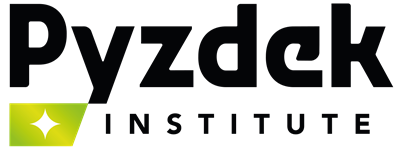Your cart is currently empty!
Selecting Six Sigma Projects
Sometimes just determining which projects to undertake isn’t enough.
Six Sigma is project-intensive. Large firms, such as General Electric, report completing as many as 7,000 Six Sigma projects in a single year. Even much smaller companies can complete several hundred projects per year. But this should come as no surprise, as projects are the means by which Six Sigma converts knowledge into bottom-line results.
However, not all Six Sigma projects produce bottom-line benefits; many produce only local improvements. In my June column I described how to use the theory of constraints (TOC) to decide where in the process to conduct Six Sigma projects. But we need to go even further. In addition to telling us where to conduct Six Sigma projects, knowing the process constraints also helps us determine what the focus of the project should be.
Six Sigma projects address three different areas of potential improvement: quality, cost and schedule. Critical characteristics in the product, process or service are identified using CTx notation: Critical-to-quality characteristics are designated CTQ; critical-to-cost, CTC; and critical-to-schedule, CTS. This classification scheme, combined with the TOC, can help focus Six Sigma projects by defining project deliverables in terms of their impact on one or more CTx characteristics.
Consider the simple process in Figure 1. The process is producing a product for which there is a market demand of 20 units per week. However, the best this process can deliver is seven units per week because that’s the best step C can do.

Applying the TOC strategy described in another post, we know that Six Sigma projects that affect step C should be given priority, those affecting steps D and E second priority, and those affecting A and B third priority. This tells us where to focus our efforts. The CTx information can help us determine what to focus on.
Assume that you have three Six Sigma candidate projects all focusing on process step C, the constraint. The area addressed is correct, but which project should you pursue first? Assume that one project will improve quality, another cost, and another schedule. Does this new information help? Definitely! Table 1 shows how this information can be used.
| Project Type | Discussion |
|---|---|
| CTQ | Any unit produced by the constraint is especially valuable because if it’s lost, additional constraint time must be used to replace or rework it. Since constraint time determines throughput (net profit of the entire system) the loss far exceeds what appears on scrap and rework reports. CTQ projects at the constraint are the highest priority. |
| CTS | CTS projects can reduce the time required for the constraint to product a unit, which means that the constraint can product more units. This directly affects throughput. CTS projects at the constraint are the highest priority. |
| CTC | Since the constraint determines throughput, the constraint’s downtime results in the lost throughput for the entire system. This makes the cost of constraint downtime extremely high. The cost of operating the constraint is usually miniscule by comparison. Also, CTC projects often have an adverse effect on quality or schedule. Thus, CTC projects at the constraint are low priority. |
Projects in the same priority group are ranked according to their impact on throughput. The same thought process can be applied to process steps before and after the constraint. The results are shown in Table 2. (Note that Table 2 assumes that projects before the constraint don’t result in problems at the constraint.) Remember, impact should be measured in terms of throughput.
Knowing the project’s throughput priority will help you make better project selections among project candidates. Of course, the throughput priority is just one input into the project selection process; other factors–for example, integration with other projects, a regulatory requirement or a better payoff in the long-term–may lead to a different decision.
| CTx | Before the Constraint | At the Constraint | After the Constraint | |
|---|---|---|---|---|
| Characteristic addressed is critical to… | Quality | * | *** | *** |
| Cost | ** | * | ** | |
| Schedule | * | *** | ** |
* Low throughput priority
** Moderate throughput priority
*** High throughput priority
One response to “Selecting Six Sigma Projects”
-
It’s not clear why CTC projects at the constraint should be lower priority than before or after the constraint, since throughput is the same throughout the process. Seems to me they should all be ranked low priority, at least until such time as the process steps all exceeded the market demand of 20 units per week. Then the market would become the constraint and the projects can shift to a cost focus.

Leave a Reply